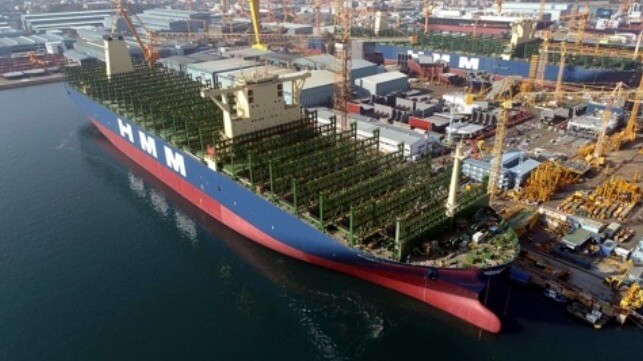BIMCO: Containership Orderbook Hits Highest Mark Since 2008

Skyrocketing demand for container capacity along with pending environmental regulations which are aging out older segments of the industry have been driving strong order volume for containerships. Since mid-2021, analysts have been highlighting the growth in the orderbook as it approached all-time highs.
Industry association BIMCO is highlighting the latest milestone for the container industry as its number of the week. By their calculation, the containership orderbook has now surpassed 6.5 million TEU, making the first time it has reached that level in 15 years.
“In just eighteen months, six million TEU of newbuilding contracts have been added to the containership orderbook,” highlights Niels Rasmussen, Chief Shipping Analyst at BIMCO nothing that it has risen to a level not seen since late 2008. Further, they report that the orderbook now represents 26 percent of the fleet size for the first time since 2014.
Last year, the shipping lines rushed to bolster capacity focusing first on the ultra-large segment of containerships. Major carriers including MSC, ONE, and Evergreen are all planning vessels near or exceeding the 24,000 TEU capacity mark, making them the largest containerships ever built. Others including Maersk chose what they see as a more optimal and versatile size ranging around the 15,000 to 16,000 TEU level. More recently, carriers have turned to the smaller feeder vessel as they focused on their hub-and-spoke networks and the opportunities in smaller, niche markets.
BIMCO highlights that the orderbook rose from a low of just 2 million TEU in October 2020. They calculate that between the start of 2022 and the end of 2024, a total of 6.2 million TEUs are scheduled for delivery.
Many of the world’s leading shipyards have reported that their order slots are now filled till 2025 for containerships. Yet orders continue to be placed as the carriers focus on anticipated changes in the market and the need for newer, more efficient tonnage.
“In addition to the newbuilding deliveries, we must expect that congestion problems around the world will eventually begin to ease,” writes Rasmussen. “This could release as much as two million TEU effective supply on top of newbuilding deliveries.” He projects as a result the total additional supply appears to be on target to exceed 8 million TEU between early 2022 and early 2025, representing 33 percent of the current fleet size in just three years.
Balancing some of the dramatic capacity increases, BIMCO however also highlights the expectation that pending environmental regulations will have a substantial impact on the current containership fleet. They conclude that some of the older vessels will have no economic means for compliance forcing owners to plan for their disposal. Other vessels, they point out might be refitted to comply with the targets or might have to slow steam to meet the EEXI targets.
“Most owners probably already have plans in place for their individual vessels. However, accurately estimating the impact of EEXI, CII, and ETS on the entire fleet is extremely difficult,” says Rasmussen.
He notes that there will be a balancing act between supply and demand in the coming years warning there could be a negative effect unless there are upside demand surprises to balance the capacity reductions related to congestion delays along with the delivery of the strong orderbook.
